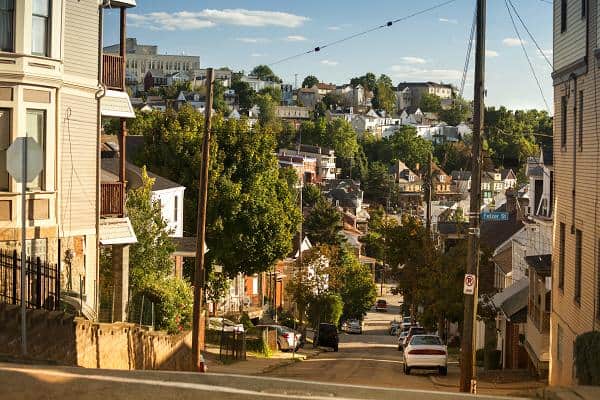
Naming the “best” city in the United States isn’t easy: Everyone has their own opinion and their own ways to measure. For its 2017 rankings, real estate website Apartment List decided to look at which U.S. cities are most attractive to young people based on job opportunities, affordability and livability.
The site gauged job opportunities by the strength of a metro’s job market based on median wages, wage growth and the millennial unemployment rate. It measured affordability using median rents and the share of households that can afford the median-priced home in their metro. And it assessed livability using a survey of 24,000 renters, which gauged how satisfied residents are with factors like weather, safety and access to activities and nightlife.
Based on their data, here are the top 10 best cities for millennials:
1. Pittsburgh, Pennsylvania
Job score: 69
Affordability score: 94
Livability score: 53
2. Provo, Utah
Job score: 69
Affordability score: 62
Livability score: 84
3. Madison, Wisconsin
Job score: 79
Affordability score: 50
Livability score: 81
4. San Antonio, Texas
Job score: 59
Affordability score: 57
Livability score: 85
5. Columbus, Ohio
Job score: 55
Affordability score: 76
Livability score: 66
6. Charleston, South Carolina
Job score: 66
Affordability score: 34
Livability score: 96
7. Omaha, Nebraska
Job score: 69
Affordability score: 83
Livability score: 43
8. Oklahoma City, Oklahoma
Job score: 71
Affordability score: 90
Livability score: 34
9. Houston, Texas
Job score: 76
Affordability score: 59
Livability score: 55
10. Minneapolis, Minnesota
Job score: 67
Affordability score: 51
Livability score: 73
Keep in mind that each individual score doesn’t need to be perfect for a city to make the top 10. The ranking is based on overall satisfaction.
Scores were calculated “within each category based on how the metro compared to the others in the study, with overall grades and rankings determined by the average score of the three categories,” says Apartment List. “The metros that top our list provide millennials a balance between a strong job market and reasonable rent and home prices, as well as a lively social scene.”
It makes sense, then, that some of the more high-profile cities didn’t make the cut: “Metros where millennials traditionally move — San Francisco, Los Angeles and New York — and where millennials have recently been moving — Seattle, Austin and Denver — receive low scores for affordability. So, “despite strong job markets and high livability ratings, rents in these metros are too expensive for many millennials and home-ownership is far out of reach for most.”
If you’re thinking of moving to a new city or just want to see how your hometown ranks, check out Apartment List’s full list. And check out the top 10 cities where your paycheck can go the furthest, too.























